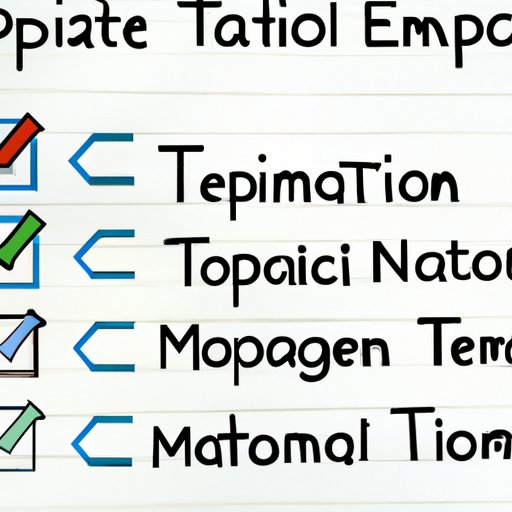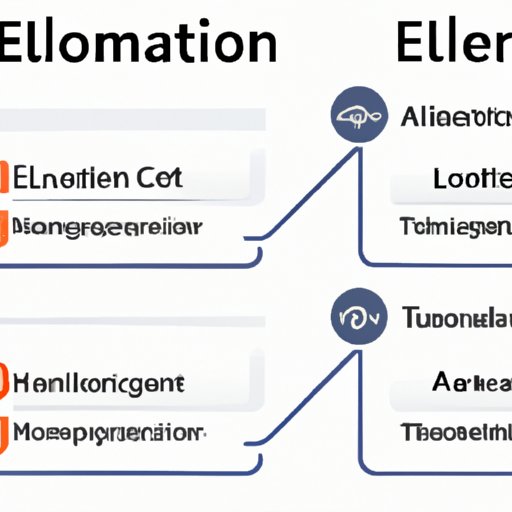An Overview of ETL Automation
ETL (Extract-Transform-Load) automation is a process that automates the extraction, transformation and loading of data from multiple sources into a single database. The objective of ETL automation is to reduce manual labour and improve efficiency in the data integration process. It helps to ensure accuracy and consistency of data while ensuring security and compliance with industry regulations. ETL automation is used in a variety of industries such as banking, healthcare, retail and more.
What is ETL Automation?
ETL automation is the process of automating the extraction, transformation and loading of data from multiple sources into a single database. The process involves extracting data from various sources, transforming it into the desired format, and then loading it into the target database or system. The purpose of ETL automation is to reduce manual labour and improve efficiency in the data integration process.

Types of ETL Automation Solutions
There are several types of ETL automation solutions available on the market. These include open source tools, commercial software packages and custom-built solutions. Open source tools are typically free and can be used to extract and transform data. Commercial software packages are generally more expensive but offer more features and better support. Custom-built solutions are tailored to meet specific requirements and are usually developed by experienced professionals.
Benefits of ETL Automation
ETL automation offers numerous benefits over manual data integration processes. These include improved efficiency, increased accuracy, reduced costs and improved security. Additionally, automated processes can help to ensure compliance with industry regulations.
Improved Efficiency
ETL automation can significantly reduce the amount of time required to complete data integration tasks. Automated processes can run quickly and accurately, reducing the need for manual intervention. This can lead to improved efficiency and productivity.
Increased Accuracy
ETL automation can help to eliminate errors that can occur when manually transferring data from one system to another. Automated processes can be programmed to perform certain tasks accurately and consistently, ensuring data accuracy.
Reduced Costs
Manual data integration processes require significant time and resources. ETL automation can help to reduce costs associated with manual processes by eliminating the need for manual labour. Automated processes can also reduce operational costs by reducing the number of errors.
How to Implement ETL Automation
Implementing ETL automation requires careful planning and preparation. Here are some steps that should be taken when implementing an ETL automation solution:
Identifying the Need
Before beginning the implementation process, it is important to identify the need for an ETL automation solution. This will help to determine the type of solution that is most suitable for the organization’s needs.
Choosing the Right Solution
Once the need has been identified, it is important to choose the right solution for the organization. This involves researching different options and selecting the one that best fits the organization’s needs.
Designing the ETL Process
The next step is to design the ETL process. This involves mapping out the steps required to extract, transform and load data from multiple sources. The design should include all the necessary steps and should be tested before being implemented.
Developing the Automation Scripts
Once the design is complete, the next step is to develop the automation scripts. This involves coding the necessary scripts to automate the ETL process. It is important to ensure that the scripts are accurate and efficient.
Testing and Deployment
Finally, the automation scripts should be tested and deployed. This involves testing the scripts to ensure that they are functioning correctly and deploying them into production. Once the scripts are deployed, they should be monitored to ensure that they are running as expected.
Challenges of ETL Automation
Although ETL automation offers many benefits, there are also some challenges associated with it. These include data quality issues, complexity of automation scripts, and security concerns.
Data Quality Issues
Data quality issues can arise when using ETL automation. This is because automated processes rely on accurate and consistent data, which can be difficult to achieve. Poor quality data can lead to incorrect results or incorrect decisions.
Complexity of Automation Scripts
Creating automation scripts can be a complex and time-consuming process. Automation scripts must be carefully coded and tested to ensure that they are accurate and efficient. This can add to the cost and time associated with ETL automation.
Security Concerns
ETL automation can introduce security risks if not properly managed. Automated processes can be vulnerable to malicious attacks or unauthorized access. Therefore, it is important to ensure that proper security measures are in place when implementing ETL automation.

Best Practices for ETL Automation
To ensure successful ETL automation, organizations should follow some best practices. These include establishing data governance, implementing automated monitoring and auditing, and reusing components whenever possible.
Data Governance
Data governance is essential for successful ETL automation. Organizations should establish policies and procedures to ensure that data is accurate, secure and compliant with industry regulations. This includes setting standards for data quality and security.
Automated Monitoring and Auditing
Organizations should implement automated monitoring and auditing to ensure that the ETL automation process is running as expected. Automated monitoring can detect any anomalies or errors in the data, allowing for quick resolution.
Reusability of Components
Reusing existing components whenever possible can help to reduce the cost and complexity of ETL automation projects. Components such as scripts, data models and mappings can be reused in multiple projects, reducing the need to recreate them from scratch.

A Comparison of ETL Automation Solutions
When selecting an ETL automation solution, it is important to consider several factors. These include cost, ease of use, performance and scalability. Each solution should be evaluated based on these criteria to ensure that it meets the organization’s needs.
Cost
The cost of an ETL automation solution should be considered when selecting the right option. Open source tools are typically free, while commercial software packages can be quite expensive. Custom-built solutions may also require additional investment.
Ease of Use
It is important to select a solution that is easy to use. Open source tools are often easier to use than commercial software packages, but may lack certain features. Custom-built solutions may require more effort to set up and maintain.
Performance
The performance of an ETL automation solution should also be taken into account. Solutions that are faster and more reliable are likely to be more cost-effective in the long run.
Case Studies of Successful ETL Automation Projects
To gain a better understanding of how ETL automation can be used effectively, it is useful to look at case studies of successful projects. Here are three examples of successful ETL automation projects:
Company X
Company X implemented an ETL automation solution to streamline their data integration processes. The solution enabled them to quickly and accurately transfer data from multiple sources into a single database. The automated process helped to reduce manual labour and improve efficiency.
Company Y
Company Y implemented an ETL automation solution to improve their data quality. The solution enabled them to monitor and audit their data to ensure accuracy and consistency. This allowed them to ensure compliance with industry regulations and improve the reliability of their data.
Company Z
Company Z implemented an ETL automation solution to reduce costs associated with data integration. The solution enabled them to reuse existing components and scripts, reducing the need to create new ones from scratch. This allowed them to reduce their costs and improve their operational efficiency.
Conclusion
ETL automation is a process that automates the extraction, transformation and loading of data from multiple sources into a single database. It offers numerous benefits such as improved efficiency, increased accuracy and reduced costs. However, there are also some challenges associated with it, including data quality issues, complexity of automation scripts and security concerns. Organizations should follow best practices such as data governance, automated monitoring and auditing, and reusability of components to ensure successful implementation.
(Note: Is this article not meeting your expectations? Do you have knowledge or insights to share? Unlock new opportunities and expand your reach by joining our authors team. Click Registration to join us and share your expertise with our readers.)
